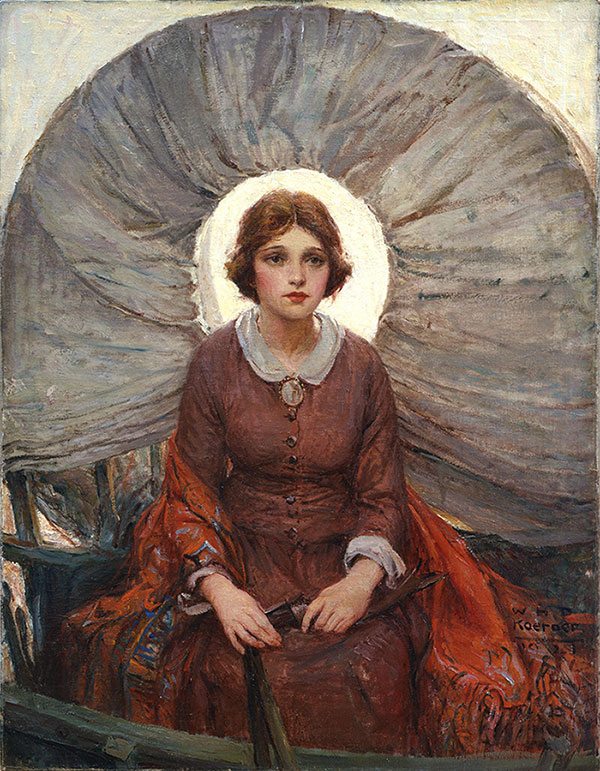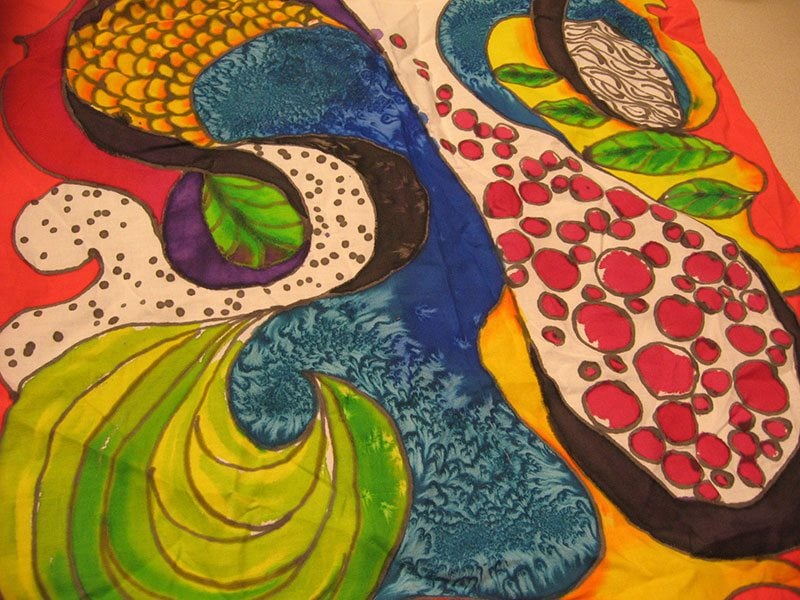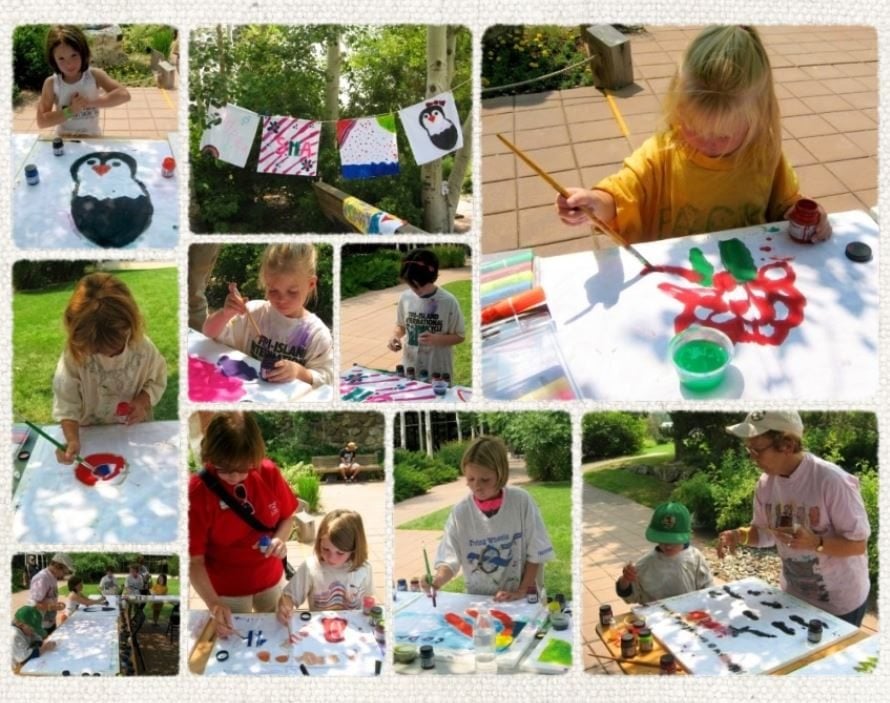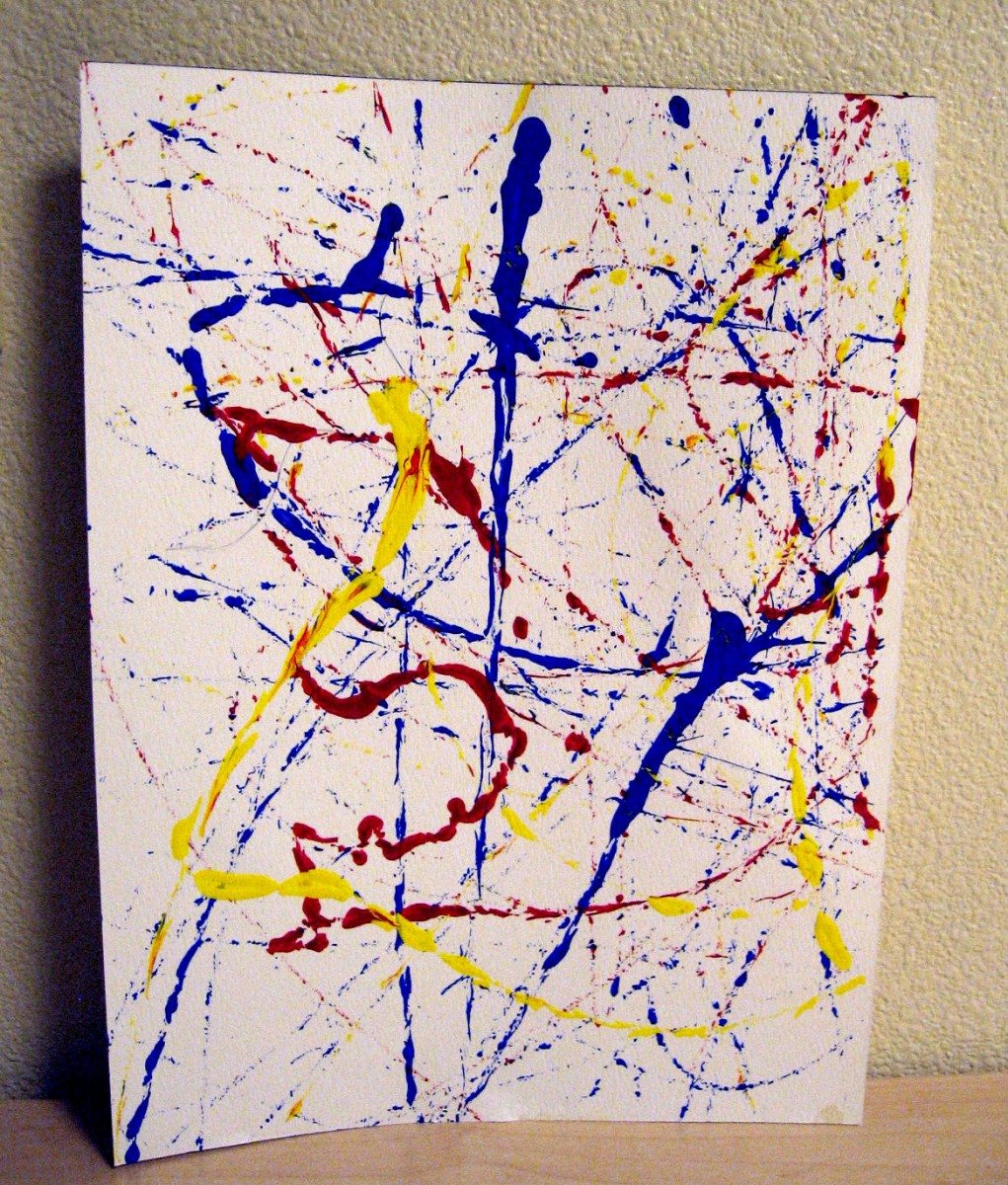“Every artist dips his brush in his own soul, and paints his own nature into his pictures.”
—Henry Ward Beecher [1]
As I mentioned in one of my earlier blog posts, Wild Things, we offer three Family Fun Days during the summer at the Buffalo Bill Center of the West. Family Fun Days take place one Friday each month and have many engaging activities in which families can participate. These Family Fun Days are free for members and are included with the regular price of admission. Our first Family Fun Day was Live at the Museum. Live animals ranging from cows, to scorpions, to chinchillas visited the Center that day.
Our second Family Fun Day was all about western art. We called it our Summer P-ART-Y! Participants designed their own buttons, created mixed media collage, painted with marbles, and even became part of a famous work of art in a tableau.

Leading up to our Summer P-ART-Y!, I decided to offer western art activities during our afternoon programming all week. Below are the instructions, so you can also create your own western art masterpieces.
Western Arts and Crafts

Western Watercolor Paintings
Here at the Buffalo Bill Center of the West, our Whitney Western Art Museum showcases western artwork, from historic to contemporary, portrait to landscape, and sketches to fine-detailed paintings.
Make Your Own Western Artwork
Supplies:
- Watercolor or thick paper
- Watercolor pencils (you can use regular colored pencils, but this activity will soften the lead for future use.)
- Water
- Paintings to copy or to use for inspiration (check online)
Directions:
There are three different ways to paint with watercolor pencils:
1) Watercolor Pencils Only
- Dip watercolor pencil in water.
- As you draw dip the pencil in the water when it dries.
2) Water First, Then Pencil
- Dip paintbrush in water.
- “Paint” paper with water.
- Take your colored pencil and draw.
3) Pencil and Painting
- Dip watercolor pencil in the water.
- Draw whatever you wish.
- Dip the paintbrush in water.
- Use the paintbrush to “paint” the pencil artwork by painting over your drawing, filling in, mixing colors, etc.
Wild West Bandana Dyeing
My blog post, I Can See By Your Outfit That You Are A Cowboy, mentioned that bandanas are a very important part of the cowboy’s gear. The bandana was used to protect the cowboy from the elements. It could be used to cover their neck, face, or ears. They also used bandanas as towels, potholders, or to blindfold horses [2]. Why not decorate your own bandana so you can have a colorful, yet functional, accessory?!
Dye Your Own Western Bandana
Supplies:
- Fabric Bandanas or thick squares of cloth
- Table covering (plastic tablecloth or foam boards)
- Fabric paint or markers
- Paintbrushes
- Clothesline
- Clothespins
Directions:
- Lay table covering out on the table to prevent fabric paint from bleeding through the cloth.
- Refer to your paint or markers’ packaging and follow their directions on how to prepare the garment or paint.
- Decorate your bandana.
- Hang it up to dry.
Painting With Marbles
Did you know that one of the most famous abstract artists was actually born in the West near Cody, Wyoming? That’s right! Jackson Pollack, a leader of the abstract-expressionist movement and known for his drip paintings was born on a ranch near Cody [1]. Why not make your own abstract painting in his style?
Make Your Own Marble Painting
Supplies:
- Paint
- Copy paper box cover or a cookie sheet with high edges
- Piece of thick paper
- Marbles
- Water
- Smocks
- Moist Towelettes
- Water-based tempura paint
- Cups
- Clothesline
- Clothespins
Directions:
- Before you begin I recommend wearing a smock as this is an extremely messy activity.
- Place paper in box cover.
- Pour the paint in cups.
- Drop a different marble in each cup.
- Take the marble out of the cup and drop it on the paper in the box.
- Hold the sides of the box and slowly rotate and shift the box from side to side or up and down, creating all types of patterns.
- Change your marble every time you use a new paint color.
- You can use one or multiple marbles at a time.
- The marbles tend to get all the different paint on them when rolling, so use your water to clean them off.
- When completed, hang paper on clothesline to dry.
- Wash hands to remove paint.
For more of our Art in the Garden activities go to Cowboy’s Life is the Life for Me, Wild Things, How the West Was Fun, Nature Arts and Crafts, and Wild Wonderland.
For more on Western art, visit the Whitney Western Art Museum at the Buffalo Bill Center of the West
Notes:
1. Henry Ward Beecher, Proverbs from Plymouth Pulpit, comp. William Drysdale (New York, NY: D. Appleton, 1887), 229, digital file
2. Leah Madsen, “I Can See By Your Oufit That You Are a Cowboy,”Education (blog), entry posted June 18, 2014, accessed September 4, 2014, https://centerofthewest.org/2014/06/18/i-can-see-by-your-outfit-that-you-are-a-cowboy/.
3. Carlienne Frisch, “Wyoming’s Famous People,” in Wyoming (Minneapolis, MN: Lerner Publications, 1994), 62.
Bibliography:
Beecher, Henry Ward. Proverbs from Plymouth Pulpit. Compiled by William Drysdale. New York, NY: D. Appleton, 1887. Digital file.
Frisch, Carlienne. “Wyoming’s Famous People.” In Wyoming, 62-67. Minneapolis, MN: Lerner Publications, 1994.
Madsen, Leah. “I Can See By Your Oufit That You Are a Cowboy.” Education (blog). Entry posted June 18, 2014. Accessed September 4, 2014. https://centerofthewest.org/2014/06/18/i-can-see-by-your-outfit-that-you-are-a-cowboy/.











